In general, sterilization is a process in which all types of microbes are destroyed, as well as their possible spores. There are different ways to use this form of control of unwanted bacteria, but most often it is used in medicine. As a rule, for deep cleaning of instruments and materials that are intended for direct contact with a damaged surface - a wound, blood, mucous membranes, etc. Depending on the nature of the task to be solved and the conditions for the use of cleaning, different sterilization techniques and modes that differ effectiveness, breadth, side effects and other parameters.

Modes of the chemical method of sterilization
Basically, for this type of treatment, disinfectants and other agents are used that allow, to varying degrees, the cleaning of the target material from microbes. In particular, propylene oxide, methyl bromide, ethylene oxide and other mixtures based on these components can be used. As for the modes of chemical sterilization, they are determined by the temperature index and the active medium in which the process occurs. High thermal conditions in this case are not required - 50-70 ° C is enough for successful processing reactions. Environments may be different. Hydrogen peroxide solutions are popular in which metal, glass, polymer and polyethylene products are immersed. Processing modes will also vary in time - from 3 hours to 3 days.
Steam sterilization method and its operating conditions
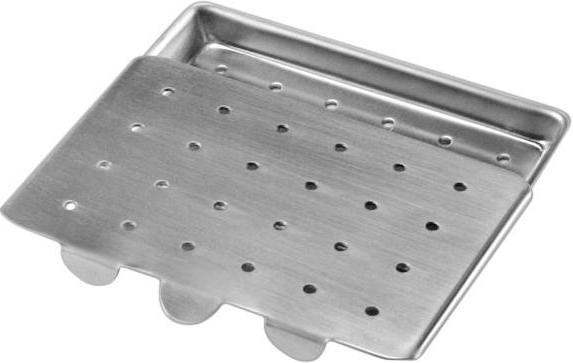
A widely used method that has many advantages. For example, exposure to hot vapors is environmentally friendly for others, which leads to the frequent use of this method in hospitals. At the same time, he also has weaknesses, among which are low efficiency and exactingness in maintaining stable conditions of the temperature-humidity regime. Actually, saturated water vapor operating under pressure acts as an active disinfecting component, the parameters of which determine the processing format. The standard mode is steam sterilization, carried out at a maintained pressure in the range from 0.05 to 0.21 MPa. The temperature corridor, in turn, can be represented by a spectrum from 110 to 135 ° C. The time cycle varies from 5 to 180 minutes. This suggests that steam can also be susceptible to material with a high sensitivity to thermal effects.
Modes when performing air sterilization
The method of dry high-temperature disinfection of a medical instrument at temperatures from 30 to 200 ° C. The modes differ in time of the full cycle and the level of thermal effect in direct proportion. That is, as the temperature rises, the time interval decreases - and vice versa. For example, the most effective air sterilization mode is performed at 200 ° C, but is completed after 30 minutes. On the other hand, with minimal indicators of air temperature, a quality operation can solve the disinfection problem only with prolonged exposure for 180 minutes. Despite the similarity of this method with steam processing, it has fundamental differences. First of all, these are restrictions on the use of plastic products. Also, before starting air cleaning, preliminary preparation of the target in the drying chamber is required.
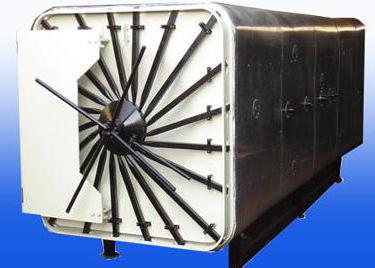
Sterilization modes in a dry oven
It can be said that this is an improved technology for standard dry air flow treatment. The difference is to increase the temperature to 250 ° C. Moreover, the time interval is reduced at the maximum point to 120 minutes. Thus, the range of thermal effects from 150 to 200 ° C for a duration of 60-90 minutes covers the optimal sterilization conditions for medical devices, which must not only be disinfected, but also cooled immediately after cleaning. By the way, dry-heat chambers work with the possibility of fine-tuning according to various parameters and in forced cooling modes. Interaction with equipment occurs through a connected PC and a special program with a list of basic and additional processing settings.
Autoclave sterilization
Like air exposure, the hot steam supply process can be optimized thanks to special equipment. This is not to say that autoclaves are intended exclusively for steam treatment, but from the point of view of disinfection, such cameras are interesting precisely for this aspect of operation. The use of two sterilization modes in an autoclave is practiced: at a pressure of 0.2 MPa and a temperature of 130 ° C, and at a pressure of 0.1 MPa and a thermal effect of 120 ° C. In this case, the operator can use the built-in modes to work with one or another type of product. This applies, in particular, to the capabilities of a medical autoclave, which contains separate programs for unpacked solid tools, porous materials, packed hollow objects, etc.
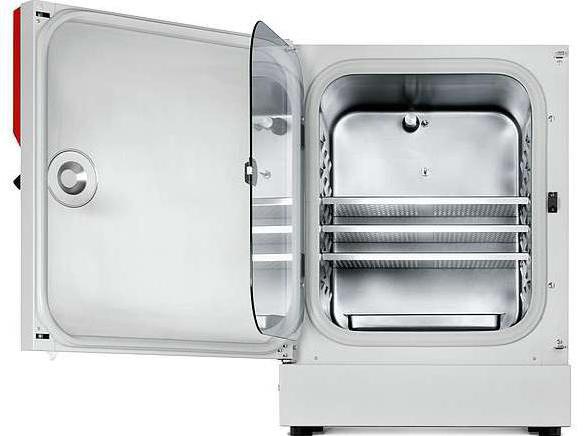
Glasperlen sterilization
A rather complicated, but effective and efficient method of processing various products using hot glass balls. A feature of this method is the high temperature regime of the medium, which can reach 330 ° C. For processing, the target object is immersed in the filler with granules with a diameter of 15 mm or more. As for time, sterilization modes of this kind involve holding the item in the active medium from 20 to 180 seconds. The absence of direct chemical-moisture contact with the objects of processing expands the possibilities of using the glasperlen method, but the mechanism of heat exposure itself still imposes a restriction on the dimensions of the disinfected items. This method is only suitable for tools in which the dimensional parameters fit within 50 mm.
Features of cold sterilization methods
A group of processing methods of this type is distinguished by the absence of an exposure factor in the form of a hot medium. These may be some of the chemical methods, physical means, ultrasonic, radiation and other sterilization technologies. Methods and modes of cleaning with cold active media are advantageous in that they can be used with sensitive products regardless of the material of manufacture. Both soft plastics and fabrics with delicate fine fibers are processed. But the reverse side of cold sterilization is often the risk of harmful toxic effects, which limits the scope of such methods for parameters other than temperature.
Gas sterilization method
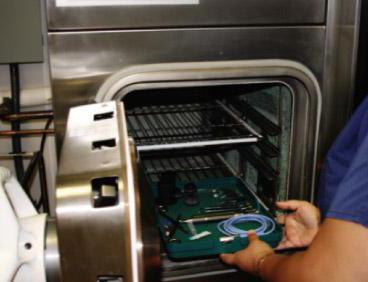
The active components of the action are combinations of methyl bromide and ethylene oxides, as well as formaldehyde vapors and ozone. For high-quality disinfection by such means, a certain regulation of the temperature background is also required, but in minimal values. In particular, sterilization modes with ethylene oxide provide for setting a parameter from 18 to 55 ° C. To use formaldehyde vapor in an alcohol mixture, a temperature of up to 80 ° C will be required, and this will be the most stringent thermal regime for gas sterilization. But the level of air pressure at the place of cleaning also matters.For the same ethylene, a prerequisite will be the removal of air until a pressure level of 0.9 kgf / cm2 is reached. Also, gas methods are the longest in time. The processing time can vary from several hours to 7-10 days. Again, the duration of the retention of the product under the intense influence of the active medium compensates for its sparing temperature performance. Sensitive objects can withstand a long cycle of contact with gas mixtures, but even a short-term intensive influence of aggressive reagents can be fatal for them.
Infrared Sterilization Modes
The modern method of cleaning, widely used for processing metal tools in various fields of medicine. Depending on the settings, the infrared effect allows you to destroy almost all microorganisms known to science. Moreover, the processing time can be called a record - from 1 to 10 minutes. Radiation reaches its maximum parameters after 30 seconds. Instrument sterilization modes are distinguished by means of infrared exposure by temperature value. The maximum level reaches 200 ° C, but depending on the characteristics of the material and the size of the item, media at 50-100 ° C can be used. However, the time interval, as in the case with steam processing, will increase with decreasing temperature.
Sterilization process control
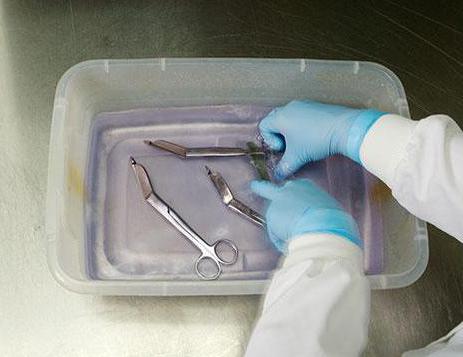
In order to identify incorrect operation of equipment and technological violations of a different kind at many enterprises, tool maintenance is periodically accompanied by a check of the main cleaning parameters. Among them, temperature, pressure, humidity coefficient and sterilization cycle time are mandatory. Direct control of the sterilization mode is performed by high-precision metrological instruments. This can be a group of highly specialized devices like thermometers, hygrometers, barometers, etc., or multifunctional stations covering the whole complex of instruments necessary for measuring. But another approach to sterilization control is practiced - through the assessment of biologically and physical characteristics.
Sterilization Efficiency Indicators
Signs are understood as a set of indicators that allow you to make a visual representation of the same processing parameters. There are several classes of markers that provide information about the characteristics of the procedure from different points of view. For example, the 1st class of indicators is designed to evaluate external and internal processes. They characterize the color change of the target when it is processed in a particular sterilization mode with specific parameters of temperature and pressure. Class 2 indicators are not intended to evaluate process characteristics at all, but separately consider the behavior of certain materials in a particular environment. There are also narrowly targeted and multifactorial markers, which, respectively, provide information on specific processing parameters or represent the effect of an effect, taking into account a combination of indicators of temperature, humidity, pressure and cycle time. Moreover, a special place in the framework of comprehensive research of a wide array of indicators is occupied not so much by the nature of their influence on the object as by the interaction between themselves. For example, how the increase in pressure can affect the efficiency of the thermal component of treatment.
Conclusion
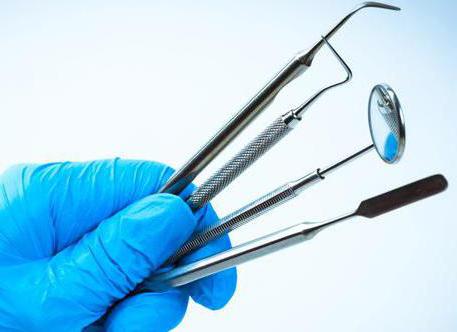
The sterilization procedure is mandatory in medical institutions. Of course, the effectiveness of the method of performing such operations is a key factor in choosing the appropriate processing option. But issues of energy efficiency and financial affordability of sterilization also matter. Methods and modes, as a rule, require maintaining fairly high temperatures, which is not without special equipment.A one-time monthly processing of several tools, of course, will not become a noticeable cost item. But for a large enterprise, in-line sterilization of hundreds of items in a weekly, and sometimes everyday format is a very significant financial and organizational burden. Therefore, more and more often there is a departure from established traditional methods of processing products to more technologically advanced and modern methods of ultrasonic, infrared and radiation disinfection.